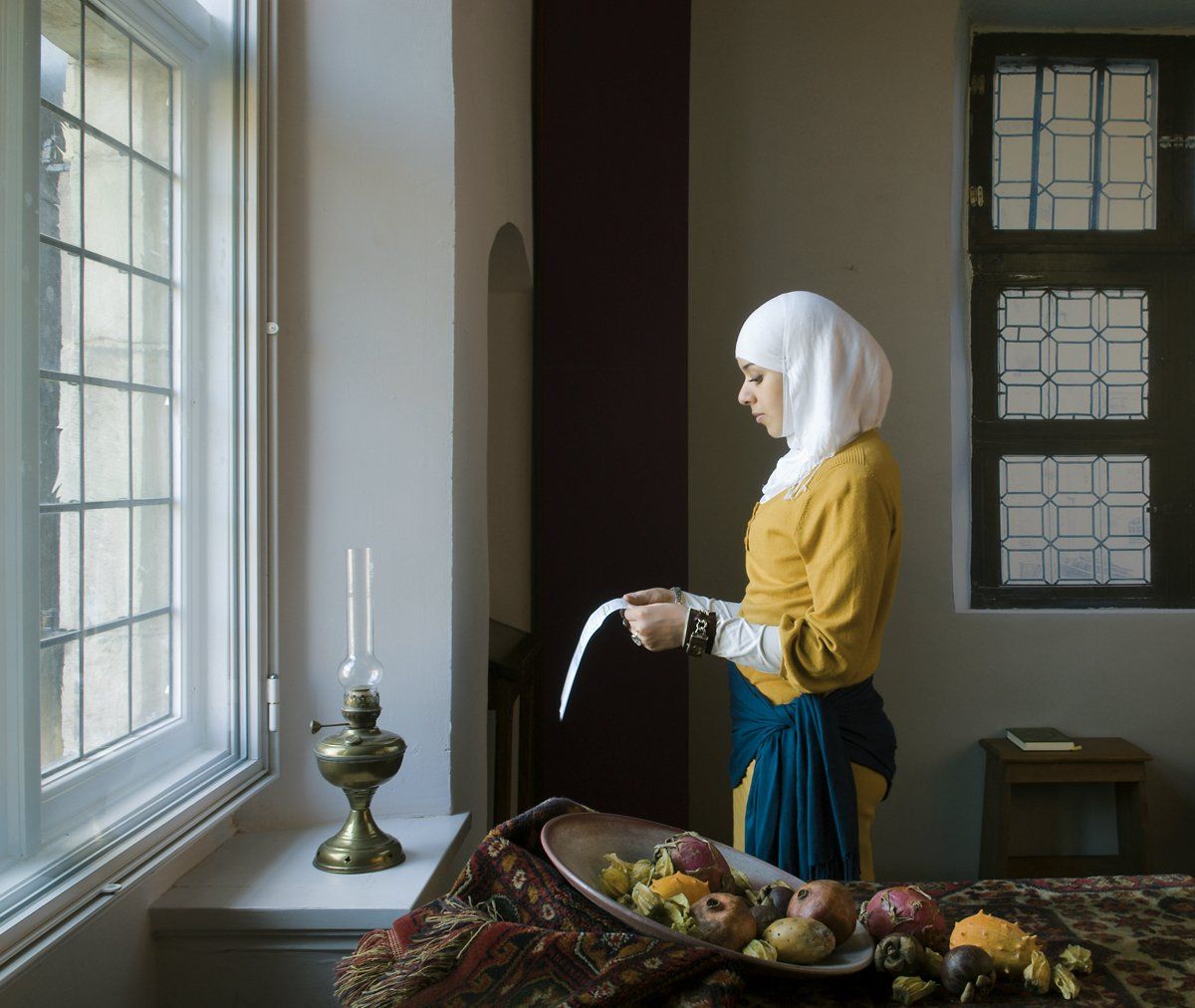
Xenophobia, and especially Islamophobia, is on the rise in many European countries. In my native Netherlands, as well as in Italy, Austria, Denmark, and Hungary, for example, anti-immigration parties are involved in the national governments. In others, such as France, Sweden, Poland, and the Czech Republic, similar parties are represented in national parliaments. These anti-immigration parties have thrived on resentment, antiglobalism, rising inequalities, and the economic crisis with the resulting uncertainties, and are scapegoating non-Western immigrants.
Given these circumstances, I feel it is important to take a stand on these developments in European society, and mobilize against intolerance and narrow-mindedness. In this series (National Identities), based on national cultural symbols, I give immigrants a main role by using them as models in my photographic variations on classic iconic paintings. By doing this, I question the concept of homogeneous "national identities" of European countries.
The Party for Freedom in the Netherlands, with its political leader, Geert Wilders, demands strict measures against immigrants, presenting them as a safety risk for "ordinary Dutch citizens." It demands that foreigners, especially if they are "nonwhite," should assimilate and adapt to Dutch culture at breakneck speed or else pack up and leave.
But what is this supposedly monolithic and static national culture, in Holland and elsewhere? Migration is not a new phenomenon, and often immigrants have played an influential and constructive role in different sectors of society, such as economics and culture.
The 17th century was economically and culturally Holland's golden age. The percentage of immigrants in the Netherlands was about the same as it is now. One quarter to one half of all the sailors, soldiers, and other employees of the Dutch colonial VOC (Dutch East India Co.) fleet were from foreign countries. Many of the "Dutch" national figures were immigrants or the descendents of immigrants: philosophers Descartes (France) and Spinoza (Portugal), the great writer Joost van den Vondel (Germany), and painters such as Frans Hals and Gerard de Lairesse (Flanders), Govert Flinck and Caspar Netscher (Germany). These men are all considered protagonists of Dutch national culture. Many of the people in the Parliament or government now who are concerned with the cultural assimilation of immigrants are themselves descendants of incoming foreigners.
Uncommon Knowledge
Newsweek is committed to challenging conventional wisdom and finding connections in the search for common ground.
Newsweek is committed to challenging conventional wisdom and finding connections in the search for common ground.
About the writer
To read how Newsweek uses AI as a newsroom tool, Click here.








